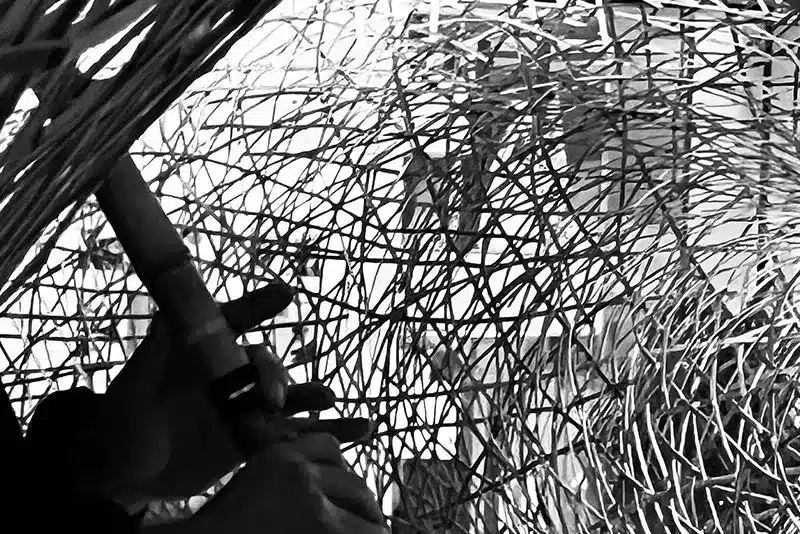
01 Nov What is a Shakuhachi?
A shakuhachi is an ancient Japanese instrument dating back to the 10th century. Over hundreds of years, the shakuhachi flute evolved in Japan until it completely transformed from its Chinese (xiao flute) predecessor. Today, the shakuhachi is typically made out of thick bamboo and is played like a recorder, with the user blowing air across an opening on one end straight down through the other end.
A shakuhachi instrument features four finger holes on top and one thumb hole on the opposite side, giving players a range of notes. The Japanese shakuhachi flute is still played today by experts worldwide. Continue reading to learn more about the shakuhachi musical instrument, its history, and how you can play it.
Why is it Called a Shakuhachi?
The name shakuhachi comes from an archaic Japanese measurement system. A shaku used to refer to the length of a foot (although the shaku is now quite outdated), and hachi means the number eight, referring to how many tenths of a shaku would come afterward. Thus, the word “shakuhachi” refers to a length of 1.8 shaku or 1.8 feet. Shakuhachi nowadays come in multiple lengths, allowing for a greater variety of keys and tones.
The History of the Shakuhachi
After the shakuhachi was introduced as the original Chinese xiao, it began to gain traction during the medieval period. One sect of Zen Buddhist monks, called the Fuke, incorporated the shakuhachi into their religious practice as a meditative tool. The sustained sound and emphasis on breath control were among the meditation techniques they practiced.
The Fuke sect led a nomadic lifestyle of semi-poverty that resulted in them receiving special permission from the shogunate to travel during a time when travel was restricted to prevent rebellion. For this reason, spies were regularly sent around Japan dressed as Fuke monks, and prowess with the shakuhachi instrument became a test to see if a given monk was a practicing Fuke or not. When the Meiji restoration occurred in 1868, the Fuke were disbanded. The shakuhachi flute was also banned since many posed illegitimately as monks. Thankfully, over time, the Meiji regime changed its restrictions.
How to Play the Shakuhachi
The shakuhachi is traditionally played while sitting in the seiza position on the floor, although you can also play it while standing. Place the narrow tip of the bamboo against your lower lip, ensuring the body of the shakuhachi points downward at a gentle 45-degree angle. All four finger holes must be facing outward, allowing the air to collide with the utaguchi, the edged notch on the opposite side of the bamboo opening.
Use the pointer and ring fingers of both hands to cover the four holes, with the thumb of the top hand covering the thumb hole. Now you’re ready to begin playing the shakuhachi. Different fingerings will produce the notes of the pentatonic scale, but an experienced Japanese shakuhachi master can manipulate the airflow to bend the pitch and play the entire chromatic scale across multiple octaves.
Conclusion
Japanese shakuhachi flutes are traditional instruments featuring a simple yet effective design. When played, they produce a uniquely ethereal tone. At Chikushin Shakuhachi, we offer shakuhachi lessons and instrument repairs from resident expert Shawnee Schroeder. Browse through our online store and order an authentic shakuhachi from us today.


